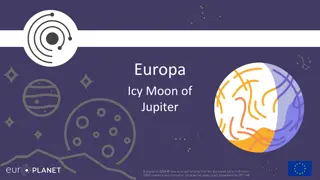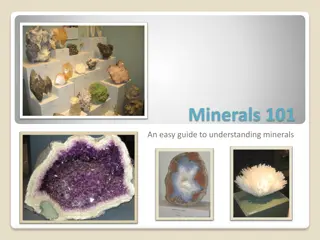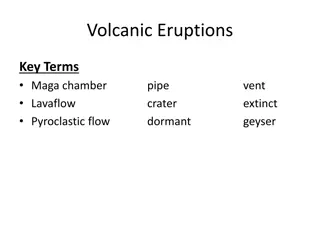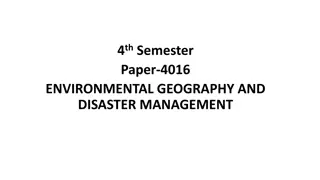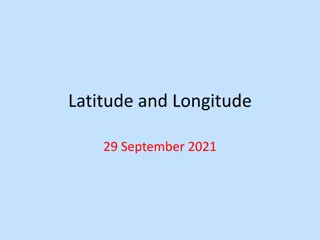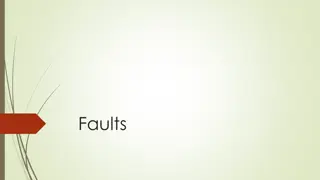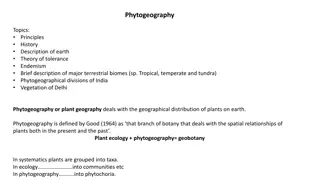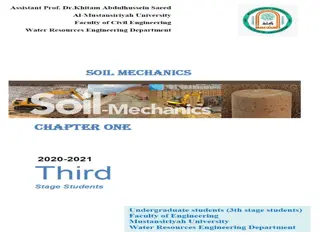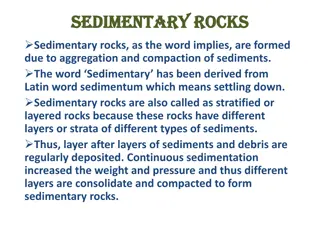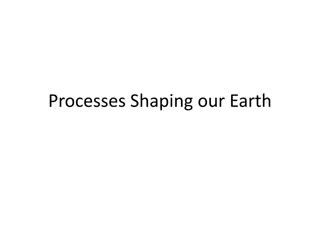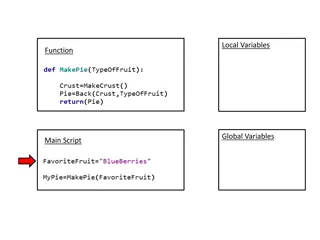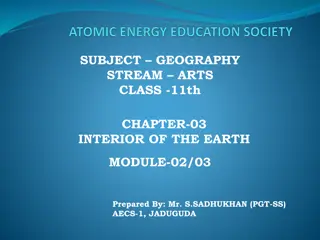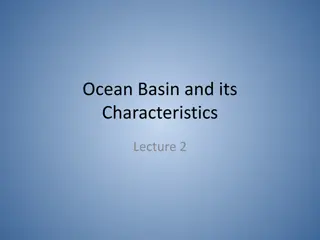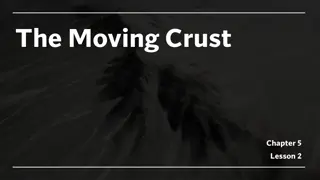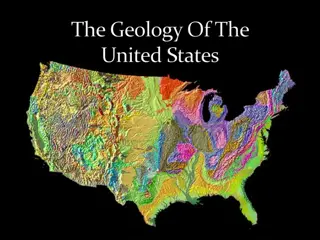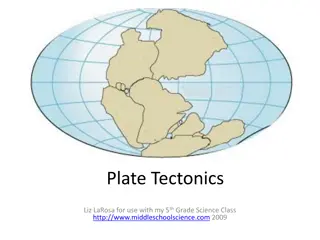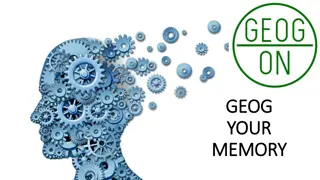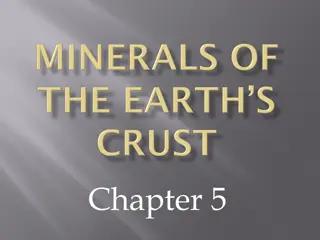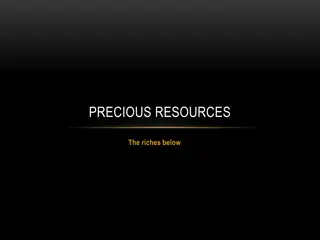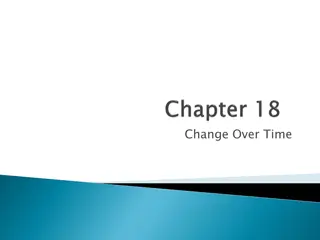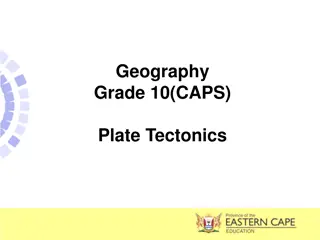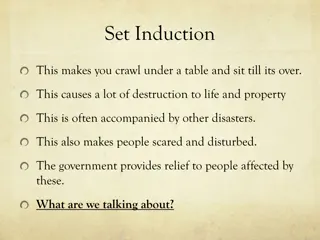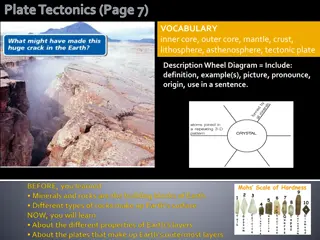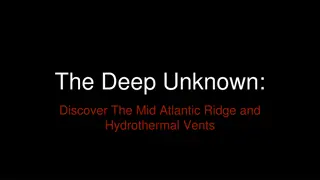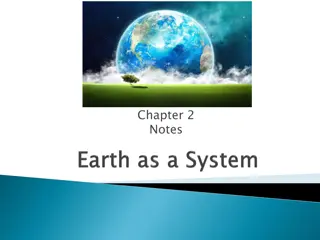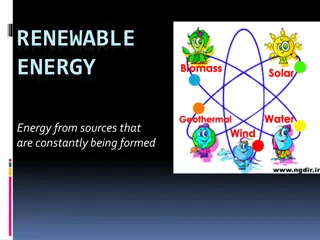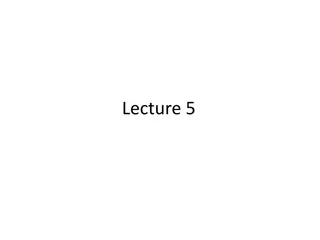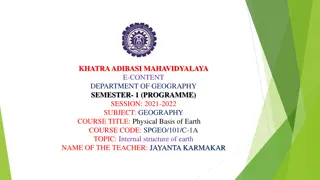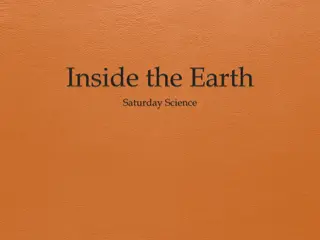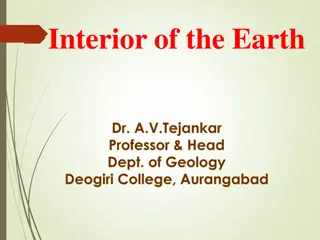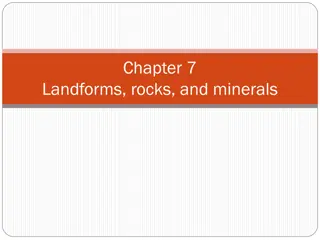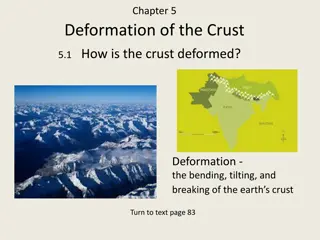Exploring Europa: Icy Moon of Jupiter and the Potential for Life
Europa, Jupiter's icy moon, offers fascinating insights into its composition, subsurface oceans, and potential for hosting extremophiles. Explore the geology, chaos terrain, and interaction between the ocean and crust. Could there be life on Europa? Learn how salt affects water freezing points and t
2 views • 12 slides
Understanding Atrophic Rhinitis: Causes, Symptoms, and Diagnosis
Atrophic rhinitis is a progressive chronic condition characterized by the atrophy of nasal mucosa and turbinates. It predominantly affects young to middle-aged adults, with females being more prone. Commonly isolated bacteria include Klebsiella ozaenae and others. The pathophysiology involves metapl
0 views • 12 slides
Understanding Minerals: A Comprehensive Guide
Earth's crust is composed of rocks made up of different minerals, which are naturally occurring, inorganic solids with distinct atomic structures and chemical compositions. Minerals exhibit properties like solidity, natural occurrence, inorganic nature, fixed composition, and crystal form. Identifyi
2 views • 20 slides
Understanding Volcanic Eruptions: Key Terminology and Processes
Volcanic eruptions are caused by the release of pressure inside the Earth, leading to the expulsion of magma through volcanic vents. This process results in the formation of cone-shaped mountains or hills known as volcanoes. The magma, which originates from the asthenosphere, rises through cracks in
1 views • 24 slides
Understanding Earthquakes: Causes and Impacts Explained
Earthquakes are natural events caused by the release of energy along faults in Earth's crust. Tectonic earthquakes, the most common type, occur due to movements of tectonic plates. Volcanic earthquakes and human-induced earthquakes also exist, each with specific triggers. Earthquakes are highly dest
0 views • 12 slides
Understanding Latitude, Longitude, and Earth's Shape
Explore the concepts of latitude, longitude, and the shape of the Earth through informative content. Discover the significance of the troposphere, continental crust density, and proofs that the Earth is round. Learn how latitude is measured, the role of Polaris (North Star), and how these elements i
2 views • 15 slides
Understanding Faults in the Earth's Crust
Stresses in the earth's crust can lead to the formation of faults, where rocks are displaced due to relative movement. Faults can vary in size and shape, with different types such as normal faults. Movement along fault planes can be either translational or rotational. This classification helps in un
1 views • 12 slides
Understanding Phytogeography: Geographical Distribution of Plants
Phytogeography, the branch of botany dealing with plant distribution, encompasses principles, history, major biomes, and India's divisions. It explores phytochoria, natural floristic areas based on species distribution. The study's history dates back to Theophrastus and Linnaeus, with Humboldt and H
0 views • 7 slides
Understanding Soil Behavior and Formation in Civil and Environmental Engineering
Civil and environmental engineering heavily rely on the properties and behavior of soil and rock materials for successful project outcomes. Geotechnical engineering and environmental considerations play crucial roles in dealing with earth materials. This content explores the elemental compositions o
3 views • 18 slides
Formation and Characteristics of Sedimentary and Metamorphic Rocks
Sedimentary rocks are formed through the aggregation and compaction of sediments, while metamorphic rocks result from changes in the form or composition of existing rocks. Sedimentary rocks contain layers of different sediments and are abundant on Earth's surface, while metamorphic rocks undergo met
0 views • 7 slides
Understanding Processes Shaping Earth: Lithosphere, Plate Tectonics, and Effects
Explore the components of our planet, such as the lithosphere, hydrosphere, atmosphere, and biosphere. Learn how the lithosphere, consisting of the Earth's crust and top solid mantle, interacts through plate tectonics, causing movements that shape the Earth's surface. Discover the concept of Pangaea
0 views • 31 slides
Understanding Local and Global Variables Functions in Scripts
Explore the concept of local and global variables in scripting through examples involving favorite fruits like blueberries and apples. Delve into the intricacies of defining types of fruit, crust, and pies while understanding the scope of variables within functions and scripts.
0 views • 12 slides
Journey to the Center of the Earth: A Geographical Exploration
Delve into the intricate layers of the Earth's interior, from the solid crust to the molten mantle and the metallic core. Explore the composition, thickness, and characteristics of each layer, revealing the fascinating mysteries beneath our feet.
0 views • 13 slides
Understanding Different Types of Rocks and How They Form
Rocks are essential components of Earth's crust, consisting of various minerals held together by natural cement. They can be categorized into three groups: Igneous, Sedimentary, and Metamorphic rocks. Each group is formed differently, either through volcanic activity, sedimentation, or existing rock
3 views • 16 slides
Understanding Ocean Basins and Their Characteristics
Ocean basins are vast submarine regions that cover a significant portion of the Earth's surface, hosting the majority of the planet's water. These basins exhibit various features such as ocean ridges, deep-sea trenches, and seismic ridges. The ocean floor is constantly evolving due to plate tectonic
0 views • 18 slides
Traditional Serbian Pies & Delights at Uzina
Explore a delectable array of traditional Serbian delicacies at Uzina, featuring cheese pies with buckwheat crust, chicken paprika pie, spring pie packed with healthy ingredients, classic apple and cherry pies, savory goat cheese pie, homemade cheese rolls, jam-filled cookies, and the innovative Por
1 views • 11 slides
Plate Tectonics: Evolution of the Earth
Explore the dynamic process of plate tectonics shaping the Earth's crust through the movement of tectonic plates, subduction zones, divergent and convergent boundaries. Discover how seafloor spreading creates new oceanic crust, and learn about the geological features formed by these processes.
0 views • 25 slides
Exploring Earth's Dynamic Forces - Chapter 5 Highlights
Learn about tectonic plates, faults, earthquakes, tsunamis, seismic waves, seismographs, volcanic activity, and more in this engaging chapter. Discover how the movement of Earth's crust gives rise to mountains, earthquakes, and other geological phenomena.
0 views • 20 slides
Understanding the Goldschmidt System in Geology
Explore the Goldschmidt System in geology, which classifies chemical elements based on their preferred host phases. Learn about lithophile elements concentrated in the Earth's crust and the elemental composition of the crust. Discover the significance of chondrites in meteorites and the foundational
0 views • 11 slides
The Geology of the United States: Overview of Major Provinces and Landforms
The geology of the United States is diverse and fascinating, organized into 10 key geologic provinces along with Hawaii and Alaska. Orogeny processes have shaped the land over time, adding new land to the Precambrian craton. Geologic maps depict the location and age of rocks in the uppermost crust u
0 views • 45 slides
Exploring Plate Tectonics and Earth's Structure for 5th Grade Science
Delve into the world of plate tectonics with a focus on Earth's layers, crust, mantle, and core. Understand how tectonic plates move and learn about continental drift and the concept of Pangea. Explore evidence of Pangea, sea floor spreading, and the fascinating geological processes that shape our p
0 views • 23 slides
Understanding Natural Hazards and Plate Boundaries
Learn about natural hazards such as volcanic eruptions, earthquakes, and storms that pose risks to human populations. Discover how factors like urbanization, poverty, climate change, and farming increase vulnerabilities to these hazards. Explore plate boundaries, crust types, and examples of geologi
0 views • 21 slides
Understanding Minerals and Rocks in Earth's Crust
Explore the fascinating world of minerals and rocks in Earth's crust in Chapter 5. Learn about the characteristics of minerals, the most common rock-forming minerals, and how they shape our planet. Discover the distinction between silicate and nonsilicate minerals and their abundance in the crust. G
0 views • 47 slides
Unveiling Earth's Riches: Resources, Minerals, and Sustainability
Australia is known for its abundant natural resources, including coal, gas, minerals, and metals. However, the country faces challenges with water scarcity. The Earth's crust holds valuable resources essential for everyday items and fuels. Understanding the importance of using resources wisely for a
0 views • 16 slides
Understanding Porcelain and Feldspar in Ceramics
Brick clays high in alkalis and iron but low in alumina facilitate forming processes. Porcelain, made from Kaolin, quartz, and feldspar, is a vitreous ceramic fired at high temperatures. Different types of porcelain, including soft-paste and hard-paste, vary in clay and alumina content affecting fir
0 views • 4 slides
Understanding Plate Tectonics and Earth's Crust
Explore the differences between oceanic and continental crust, the distinctions of lithosphere and asthenosphere, the dynamics of convergent and divergent boundaries, as well as the concepts of folding and faulting in geological formations. Delve into the characteristics of oceanic crust versus ocea
0 views • 10 slides
The Theory of Plate Tectonics: Continents in Motion
Earth's crust and lithosphere have changed over geologic time, forming tectonic plates that move due to convection currents. The concept of plate tectonics explains how continents fit together, the existence of a supercontinent called Pangaea, and natural phenomena like earthquakes and mountains. Ea
0 views • 28 slides
Understanding Plate Tectonics and Earth's Surface Features
The study of plate tectonics reveals how the Earth's crust is divided into tectonic plates, leading to various types of plate boundaries like divergent, convergent, and transform. These movements result in earthquakes, volcanic eruptions, and landform changes such as folding and faulting. Different
0 views • 15 slides
Understanding Earthquakes and Plate Tectonics
Rapid Earth Movement, specifically earthquakes, is a natural disaster causing destruction and fear. Plate tectonics play a crucial role in the occurrence of earthquakes and volcanoes. The movement of Earth's plates at plate boundaries results in different geological features like fold mountains. Thi
0 views • 36 slides
Earth's Layers and Plate Tectonics Overview
Earth's layers, including the core, mantle, and crust, have different properties and compositions that shape the planet's structure. Scientists study seismic waves to understand Earth's interior. Plate tectonics play a crucial role in shaping the planet's surface features through the movement of lit
0 views • 13 slides
Discover the Mid-Atlantic Ridge and Hydrothermal Vents
The Mid-Atlantic Ridge is an underwater mountain range running from Iceland to the Antarctic, formed where tectonic plates meet and create new ocean floor. Hydrothermal vents, like chimneys, spew mineral-rich seawater due to interactions between cold seawater and hot molten rock beneath the Earth's
0 views • 8 slides
How to Achieve the Perfect Burger Techniques and Tips
To achieve the perfect burger, start with high-quality 80\/20 ground beef for optimal flavor and juiciness. Form patties gently, being careful not to overwork the meat. Season with salt and pepper. Cook on high heat to create a crispy crust, flipping
2 views • 10 slides
Exploring Earth's Composition and Structure
Delve into the depths of Earth's layers from the crust to the core, learning about its compositional and structural zones. Discover the significance of seismic waves in unraveling the mysteries of Earth's interior, and grasp the fundamental concepts behind the planet's lithosphere and asthenosphere.
0 views • 47 slides
Exploring Renewable Energy Sources
Renewable energy is derived from constantly replenished sources such as solar power, wind power, biomass, hydroelectricity, and geothermal energy. These sustainable sources offer clean alternatives to traditional fossil fuels, contributing to a greener future. Solar energy utilizes the sun's power t
0 views • 16 slides
Understanding Earthquakes: Causes, Effects, and Types
Earthquakes are seismic disturbances caused by the release of energy in the Earth's crust. They can lead to significant damage and are classified based on their depth as shallow, medium, or deep earthquakes. This phenomenon includes key elements such as epicenter, focus, hanging wall, footwall, eart
0 views • 7 slides
Understanding Earth's Internal Structure: A Geographical Perspective
Deep parts of Earth's interior are studied indirectly through geophysics, including seismic waves, magnetic fields, gravity, and heat. Seismic studies reveal Earth's layers - crust, mantle, and core - each with distinct properties and compositions. The lithosphere, comprising the upper mantle and cr
0 views • 12 slides
Journey to the Earth's Layers
The Earth's structure consists of four main layers: the crust, mantle, outer core, and inner core. The crust is the thin, rocky layer we see on the surface, while the mantle is a solid layer that flows like a viscous liquid. The outer core is a hot, melted layer of iron and nickel, and the inner cor
0 views • 10 slides
Journey to the Center of the Earth: Unveiling the Layers
Delve into the depths of the Earth with Dr. A.V. Tejankar to explore the three main layers - Crust, Mantle, and Core. Discover how the Earth's composition and physical properties vary across these layers, resembling the layers of an egg. Uncover the secrets of the Earth's interior, from the thin but
0 views • 15 slides
Understanding Earth's Changing Crust: Landforms, Rocks, and Minerals
The Earth's crust is in constant motion due to plate tectonics, which results in various landforms, rocks, and minerals. This movement is driven by forces such as tension, compression, and shear, causing earthquakes, mountains, and volcanic activity. Through processes like weathering and erosion, th
0 views • 26 slides
Understanding Crust Deformation: Forces, Stress, and Isostatic Adjustments
The Earth's crust undergoes various forms of deformation such as bending, tilting, and breaking due to forces like compression, tension, and shearing. Isostatic adjustments play a role in areas with mountain ranges, causing the crust to bend up and down. As mountain ranges erode, the crust lightens
0 views • 9 slides
